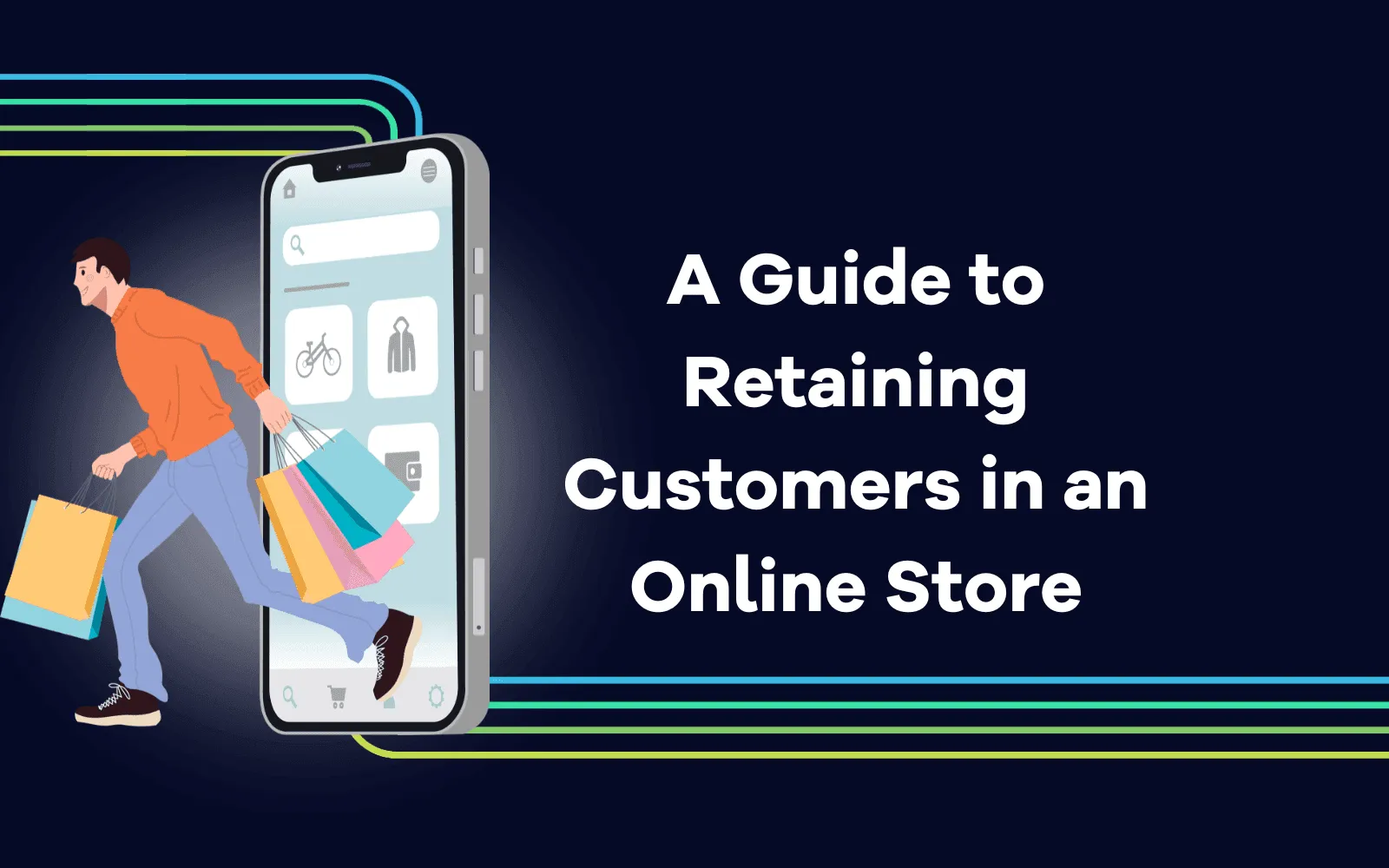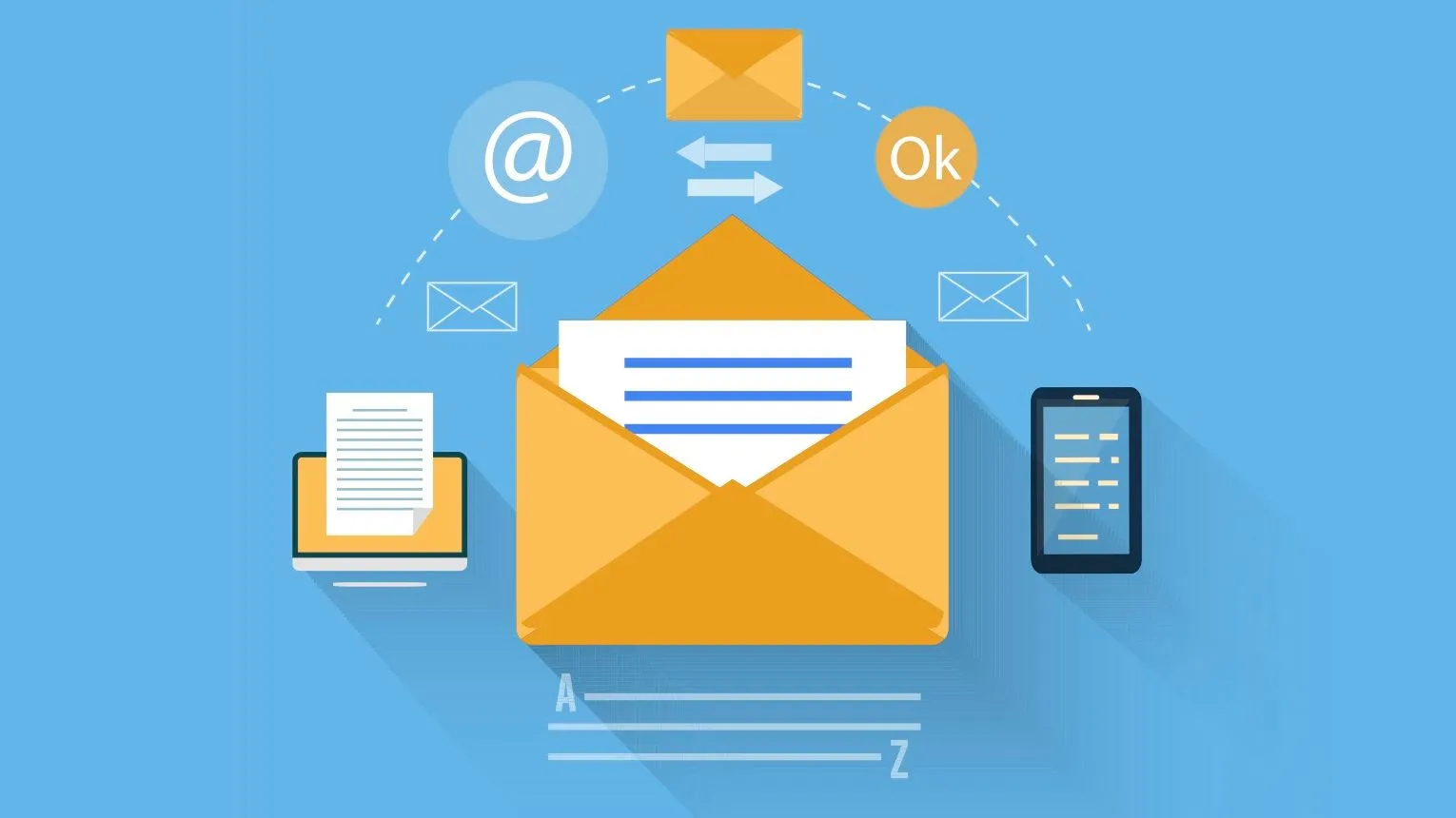
A Guide to Retaining Customers in an Online Store

Dipen Visavadiya
August 28, 2023
Boost Sales with Effective Online Customer Retention Strategies - Your Guide to Keeping Shoppers Engaged and Returning.

In the fast-paced world of e-commerce, attracting new customers to your online store is a significant accomplishment. However, the true measure of success lies in retaining these customers and turning them into loyal brand advocates. Customer retention is the cornerstone of sustainable business growth and profitability.
In this comprehensive guide, we will delve into the strategies and best practices for retaining customers in an online store. From understanding customer behavior to leveraging the power of personalization and social proof, this guide will equip you with the tools to build long-lasting customer relationships and thrive in the competitive e-commerce landscape.
The Importance of Customer Retention in E-commerce
In the vast and ever-evolving world of e-commerce, customer retention holds the key to sustained success. While acquiring new customers is essential, retaining existing ones is even more critical for an online store's long-term growth and profitability. Loyal customers not only make repeat purchases but also become brand advocates, spreading positive word-of-mouth and attracting new customers through recommendations.
Customer retention is also more cost-effective than customer acquisition. The resources required to retain an existing customer are far less than those needed to attract and convert a new one. Additionally, loyal customers tend to spend more and are more likely to try new products and services offered by your online store.
Understanding the Customer Lifecycle and its Impact on Retention
The customer lifecycle encompasses the various stages that a customer goes through in their relationship with your online store. It includes awareness, consideration, purchase, retention, and advocacy. Understanding this lifecycle is crucial for designing effective customer retention strategies that address the unique needs and expectations of customers at each stage.
The customer lifecycle also highlights the importance of ongoing engagement with customers. Retaining customers requires continuous efforts to maintain a positive and rewarding relationship beyond the initial purchase.
The Benefits of Building Customer Loyalty in an Online Store
Customer loyalty is the ultimate goal for any online store. Loyal customers are more likely to make repeat purchases spend more and recommend your brand to others. Building customer loyalty involves consistently delivering exceptional experiences and meeting or exceeding customer expectations.
Loyal customers also provide valuable feedback and insights that can be used to improve products, services, and overall customer experience. Their feedback is a valuable source of information for making data-driven decisions to enhance customer retention efforts. One of the major features that was invented after receiving valuable customer feedback was Shopify accounting and their integrations.
Understanding Customer Behavior and Expectations
Analyzing Customer Purchase Patterns
Understanding customer purchase patterns is a crucial step in retaining customers. By analyzing data such as purchase frequency, average order value, and product preferences, you can identify your most valuable customers and tailor your retention strategies accordingly.
Analyzing purchase patterns also allows you to identify trends and anticipate customer needs. For example, if certain products have a higher purchase frequency, you can ensure sufficient stock availability and run targeted promotions to entice customers to make repeat purchases. Or, if you can offer your clients some service as well, make sure to embed a booking system to your online store.
Identifying Factors Influencing Customer Loyalty
Customer loyalty is influenced by a multitude of factors, ranging from product quality and pricing to customer service and brand reputation. Identifying the key factors that influence customer loyalty allows you to focus your efforts on areas that have the most significant impact on retention.
Conducting customer surveys and feedback forms can be a valuable tool for understanding customer preferences and pain points. By actively listening to your customers, you can make data-driven decisions to enhance their experience and build stronger relationships.
Meeting and Exceeding Customer Expectations
Meeting customer expectations is essential for retaining customers, but exceeding them is what sets your online store apart from the competition. By consistently delivering exceptional customer service, going the extra mile to solve problems, and addressing customer pain points, you can create a memorable and positive shopping experience that fosters loyalty.
Going above and beyond to exceed customer expectations can also lead to positive word-of-mouth and online reviews, which can significantly impact your online store's reputation and credibility.
Personalization and Customer Experience
Tailoring Product Recommendations for Individual Customers
Personalization is the key to enhancing the customer experience and increasing retention. Implementing recommendation engines and personalized product suggestions based on customer behavior and preferences can significantly improve customer engagement and conversions.
By analyzing customer data, such as past purchases, browsing history, and wishlist items, you can offer relevant product recommendations that align with their interests and needs. Personalized recommendations not only improve the customer experience but also increase the likelihood of repeat purchases.
Implementing a Seamless and User-Friendly Shopping Experience
A seamless and user-friendly shopping experience is critical for customer retention. Customers expect smooth and intuitive website navigation, a simple and secure checkout process, and mobile responsiveness. A positive shopping experience ensures that customers are more likely to return for future purchases and recommend your store to others.
Utilizing Customer Data to Enhance Personalization
Leveraging customer data is essential for effective personalization. By collecting and analyzing data on customer behavior, preferences, and demographics, you can create targeted marketing campaigns and personalized offers that resonate with your customers.
Using customer data to send personalized emails with tailored product recommendations, exclusive offers, and relevant content shows customers that you understand their needs and preferences, fostering a sense of connection and loyalty.
Communication and Engagement Strategies
Creating an Effective Email Marketing Campaign
 Image Source
Email marketing remains a powerful tool for customer engagement and retention. Designing effective email campaigns, such as welcome emails, personalized product recommendations, and exclusive promotions, keeps customers informed and interested in your brand.
Image Source
Email marketing remains a powerful tool for customer engagement and retention. Designing effective email campaigns, such as welcome emails, personalized product recommendations, and exclusive promotions, keeps customers informed and interested in your brand.Segmenting your email list based on customer behavior and preferences allows you to send targeted messages that are more likely to resonate with recipients. Personalized and relevant emails, along with a professional and well-designed email signature, can lead to higher open and click-through rates, driving increased engagement and retention. Efficient email campaign management streamlines your marketing efforts, helping you deliver the right message to the right audience at the right time.
Leveraging Social Media for Customer Engagement
 Image Source
Social media platforms provide a valuable opportunity to engage with customers, showcase winning products, and run exclusive promotions. Maintaining an active and interactive social media presence helps build a community of loyal followers and fosters brand loyalty.
Image Source
Social media platforms provide a valuable opportunity to engage with customers, showcase winning products, and run exclusive promotions. Maintaining an active and interactive social media presence helps build a community of loyal followers and fosters brand loyalty.Using social media to share behind-the-scenes content, customer testimonials, and user generated content (UGC) can humanize your brand and build a sense of authenticity and trust and increase your social selling capacity
Implementing Live Chat and Customer Support
Offering live chat support provides real-time assistance to customers during their shopping journey. Prompt and helpful customer support can resolve issues and answer questions, increasing customer satisfaction and loyalty.
Live chat also allows you to collect customer feedback and address any concerns or complaints proactively. By showing that you care about your customer's experiences, you build trust and confidence in your brand.
Loyalty Programs and Incentives
Designing a Rewarding Customer Loyalty Program
Loyalty programs are an effective way to reward customers for their repeat purchases and encourage them to remain loyal to your online store. Designing a well-structured loyalty program that offers meaningful rewards, such as discounts, free shipping, or exclusive access to new products, can significantly impact customer retention.
Offering tiered loyalty programs with increasing benefits based on customer spending levels can incentivize customers to increase their purchases to reach the next loyalty tier.
Offering Special Discounts and Exclusive Deals
Special discounts and exclusive deals create a sense of urgency and exclusivity, motivating customers to make repeat purchases. Limited-time offers and flash sales can generate excitement and encourage customers to act quickly to take advantage of the deal.
Utilizing customer data to send personalized discount offers to high-value customers can make them feel appreciated and valued, fostering loyalty and repeat business.
Using Gamification to Encourage Repeat Purchases
Gamification involves incorporating gaming elements, such as points, badges, and challenges, into the shopping experience to make it more enjoyable and engaging for customers. Gamified loyalty programs can encourage customers to earn points and unlock rewards through various interactions with your online store, such as making purchases, writing reviews, or referring friends.
Gamification can create a sense of achievement and competition, motivating customers to remain engaged with your brand and come back for more interactions.
Post-Purchase Follow-Up and Support
Sending Order Confirmations and Shipping Updates
A smooth post-purchase experience is vital for customer satisfaction and retention. Sending timely order confirmations and shipping updates reassures customers that their purchase is on its way and builds anticipation for its arrival.
Keeping customers informed about their order status and providing tracking information allows them to plan for delivery and reduces anxiety about potential delays.
Requesting Feedback and Reviews
Customer feedback and reviews are invaluable for improving your products and services. Following up with customers after their purchase and requesting feedback or reviews shows that you value their opinions and are committed to providing the best possible experience.
Positive reviews also serve as social proof, building trust and credibility for your brand and influencing potential customers to make a purchase.
Resolving Customer Issues and Complaints
Handling customer issues and complaints promptly and efficiently is essential for customer retention. When a customer faces a problem, they expect a quick resolution and personalized attention to their concerns.
Providing top-notch customer support and going the extra mile to resolve issues can turn a dissatisfied customer into a loyal advocate for your brand.
Building Trust and Credibility
Showcasing Customer Testimonials and Success Stories
Customer testimonials, success stories, and case study presentations are powerful tools for building trust and credibility. Positive feedback from satisfied customers highlights the quality and value of your products and services.
Displaying real customer testimonials on your website and social media platforms can reassure potential customers that they are making the right decision in choosing your online store.
Displaying Trust Seals and Security Certifications
Online security is a top concern for customers, especially when it comes to sharing sensitive information during online transactions. Displaying trust seals and security certifications, such as SSL certificates, on your website instills confidence in customers and assures them that their data is secure.
Trust seals from reputable organizations, such as McAfee or VeriSign, are recognizable symbols of trust and can significantly impact customer confidence in your online store.
Offering Hassle-Free Return and Refund Policies
Clear and hassle-free return and refund policies provide customers with peace of mind when making a purchase. Customers are more likely to buy from an online store that offers a straightforward and customer-friendly return process.
Providing transparent information about your return and refund policies on your website helps build trust and demonstrates your commitment to customer satisfaction.
Creating Valuable Content for Customers
Developing Informative Product Guides and Tutorials
Creating informative product guides and tutorials helps customers make informed purchase decisions and get the most out of their products. By offering valuable content, you position your online store as an authority in your industry and build customer trust.
Informative product guides can also serve as lead magnets to attract potential customers and keep them engaged with your brand.
Hosting Webinars and Virtual Events
Webinars and virtual events provide a platform to engage with customers, showcase your expertise, and offer personalized advice and recommendations.
Hosting webinars and virtual events can also help you connect with your audience on a deeper level, strengthening customer relationships and fostering loyalty.
Starting a Blog to Share Industry Insights
Starting a blog allows you to share valuable industry insights, tips, and trends with your audience. A well-maintained blog can attract organic traffic, position your brand as a thought leader, and keep customers engaged with your brand.
By consistently providing valuable content, you can build a loyal readership and nurture long-lasting relationships with your customers.
Utilizing Retargeting and Abandoned Cart Strategies
Implementing Retargeting Ads to Bring Customers Back
Retargeting ads, also known as remarketing ads, target customers who have previously visited your online store but did not make a purchase. By displaying relevant ads across the web, you can remind customers of the products they showed interest in and entice them to return to your store.
Retargeting ads can significantly improve conversion rates and bring back potential customers who may have left without completing a purchase.
Encouraging Cart Abandonment Recovery through Incentives
Cart abandonment is a common challenge in e-commerce. Implementing cart abandonment recovery strategies, such as sending personalized emails with incentives, such as discounts or free shipping, can encourage customers to return and complete their purchases.
By offering incentives, you give customers a reason to revisit your online store and complete their checkout process.
Analyzing Data for Continuous Improvement
Analyzing data from retargeting campaigns and cart abandonment recovery efforts provides valuable insights into customer behavior and preferences. By understanding why customers leave without making a purchase, you can make data-driven decisions to optimize your website and shopping experience.
Continuous improvement based on data analysis ensures that you are always refining your retention strategies to achieve better results.
Monitoring Customer Churn and Reducing Attrition
Identifying Signs of Customer Churn and Attrition
Monitoring customer churn and attrition involves identifying signs that indicate a customer is at risk of leaving or has already left your online store. Signs of customer churn can include decreased purchase frequency, reduced engagement, and negative feedback.
By identifying these signs early, you can intervene and implement strategies to win back at-risk customers.
Implementing Strategies to Reduce Churn
Reducing churn requires a proactive approach to address the root causes of customer dissatisfaction. This can include providing personalized offers, resolving customer issues, and improving overall customer experience.
Additionally, staying in touch with customers through personalized communication can help you stay top-of-mind and prevent them from seeking alternative solutions.
Customer Win-Back Campaigns
Win-back campaigns target customers who have stopped purchasing from your online store. By offering special incentives, such as exclusive discounts or personalized offers, you can re-engage inactive customers and entice them to return.
Win-back campaigns present an opportunity to show customers that you value their business and are committed to meeting their needs.
Social Proof and Influencer Marketing
Leveraging Social Proof to Boost Trust and Conversions
 Image Source
Social proof, such as customer reviews, ratings, and testimonials, is a powerful tool for building trust and boosting conversions. Positive social proof reinforces the value and credibility of your products and services, influencing potential customers to make a purchase.
Image Source
Social proof, such as customer reviews, ratings, and testimonials, is a powerful tool for building trust and boosting conversions. Positive social proof reinforces the value and credibility of your products and services, influencing potential customers to make a purchase.Encouraging customers to leave reviews and displaying them prominently on your website and social media can significantly impact customer trust and retention.
Collaborating with Influencers to Reach New Audiences
Influencer marketing involves partnering with individuals who have a significant following and influence in your industry. Collaborating with influencers can help you reach new audiences and build brand awareness.
Influencers can also share their positive experiences with your products or services, providing social proof and encouraging their followers to become customers.
Harnessing User-Generated Content for Promotion
User-generated content (UGC) is content created by your customers, such as photos, videos, and reviews, that showcase their experiences with your brand. UGC serves as authentic and relatable content that can strengthen your brand's authenticity and trustworthiness.
By encouraging customers to share their experiences and featuring UGC in your marketing efforts, you empower your customers to become advocates for your brand.
The Role of Customer Feedback in Retention
Conducting Customer Surveys and Feedback Forms
Customer surveys and feedback forms are valuable tools for gathering insights into customer satisfaction, preferences, and pain points. Conducting regular surveys allows you to collect feedback at various touchpoints in the customer journey.
Asking the right questions and actively listening to your customers' feedback helps you identify areas for improvement and tailor your retention strategies to meet their needs.
Listening and Responding to Customer Input
Listening to your customers is fundamental to successful retention efforts. Whether through customer support interactions or social media conversations, actively listening to your customers' concerns and feedback shows that you value their opinions.
Responding promptly and thoughtfully to customer input demonstrates your commitment to customer satisfaction and builds trust.
Using Feedback to Improve Products and Services
Customer feedback is a goldmine of insights that can guide product development strategy and service enhancements. By leveraging customer feedback, you can identify areas for improvement, address pain points, and introduce new features that align with customer needs.
Using customer feedback to drive continuous improvement shows that you are responsive to customer needs and invested in providing the best possible experience.
Emphasizing Community Building and Engagement
Creating Online Communities for Customer Interaction
Building an online community around your brand fosters a sense of belonging and engagement among customers. Online forums, social media groups, and brand-specific communities allow customers to interact with each other and with your brand.
A strong online community can become a valuable source of customer support, peer recommendations, and user-generated content.
Encouraging User-generated Content and Discussions
Encouraging customers to share their experiences, photos, and stories with your brand generates user-generated content that can be shared across your marketing channels. User-generated content is authentic and relatable, making it highly influential in building trust and loyalty.
Hosting discussions and polls within your online community also provides valuable insights into customer preferences and interests.
Hosting Virtual Events and Exclusive Membership Benefits
Hosting virtual events, such as webinars, live Q&A sessions, or exclusive product launches, provides an opportunity to connect with your audience in real time. Virtual events create a sense of exclusivity and excitement, encouraging customer engagement and retention.
Offering exclusive membership benefits, such as early access to new products or special promotions, rewards your most loyal customers and incentivizes repeat purchases.
Measuring and Analyzing Customer Retention Metrics
Identifying Key Customer Retention Metrics
Measuring customer retention requires tracking specific metrics that indicate the health of your customer relationships. Key customer retention metrics include customer churn rate, customer lifetime value (CLV), repeat purchase rate, and customer retention cost.
By monitoring these metrics, you can gain valuable insights into the effectiveness of your retention strategies and make data-driven decisions to improve customer loyalty.
Utilizing Analytics Tools for Data Analysis
Implementing analytics tools, such as Google Analytics, can help you collect and analyze data on customer behavior, website traffic, and conversion rates. These tools provide valuable data to measure the success of your retention efforts and identify areas for improvement.
Analyzing data allows you to understand customer preferences, track the effectiveness of your marketing campaigns, and optimize your website for better conversions.
Making Data-Driven Decisions for Improvement
Data-driven decision-making involves using insights from customer data and analytics to optimize your customer retention strategies continually. By analyzing customer behavior, feedback, and purchasing patterns, you can identify opportunities for improvement and prioritize the most impactful retention initiatives.
Data-driven decision-making ensures that your efforts are focused on actions that yield the highest return on investment and positively impact customer retention.
Conclusion
In the fast-paced and competitive world of e-commerce, retaining customers is a strategic imperative for sustained success. By understanding customer behavior, leveraging personalization, and fostering a strong community, you can build long-lasting customer relationships that drive loyalty and advocacy.
Loyal customers are the backbone of any successful e-commerce venture. Their repeat business and advocacy are the driving force behind sustainable growth and profitability.
By prioritizing customer retention and consistently delivering exceptional experiences, you can create a loyal customer base that not only fuels your success but also becomes your most valuable asset in the ever-evolving world of e-commerce. So, invest in building customer loyalty, and watch your online store thrive in the competitive landscape. Remember, the journey to customer retention is an ongoing process, but the rewards are well worth it!
Related blog posts

5 LLM Visibility Metrics You Should Track in 2026
SEO is now both about ranking in search engines and being visible in LLMs. We give you five visibility metrics every SEO should track in 2026.
3 December 2025Is LLM Tracking Relevant for You?
LLM tracking is not just for SEOs. It is also relevant for content teams, agencies, marketing leadership, and communication teams. Learn why here.
26 November 2025
How to Find the Best Prompts to Track for AI Visibility
Do you want to start tracking prompts to optimize your AI visibility? We give you seven practical ways to identify relevant prompts to track in LLMs.
9 November 2025
